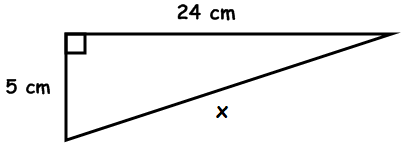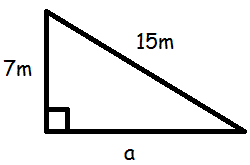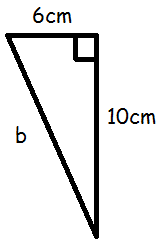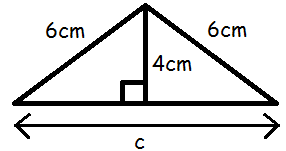Pythagoras' Theorem |
| Pythagoras' questions
nearly always come up on the calculator paper of your maths exam.
You will need a calculator to answer these questions. Pythagoras' theorem states: "In any right angled triangle, the area of the square on the hypotenuse is equal to the sum of the areas of the squares on the other two sides." Now in pupil friendly speak: "To find the longest side, square the two short sides and add your answers. Now square root your answer." or if you want o find a smaller side: "Square the longest side and take away the square of the shorter side. Now square root your answer." |
Example Question
Find the length marked x
on the triangle below.
Give your solution to one decimal place. |
Solution
| The
first thing we need to do when answering a Pythagoras question is
decide if it's the longest side or one of the short side we are trying
to find. In this case it's the longest side so we will be adding the squares
of the other two sides. Hint: The longest side or
hypotenuse is always the side opposite the right angle. So first we square the two short sides and add our answers together: 242
+ 52 = 576 + 25
= 601 Now
square root your answer and round it to one decimal place:
= 24.51530134
= 24.5 cm Finally
check your answer is sensible by making sure your answer is longer than
the other two sides!
|
Test Yourself!
Find
the length of a. Give your answer to one decimal place. |
|
|
Find
the length of b.
Give your answer to one decimal place.
 |
|
|
Find
the length of c.
Give your answer to one decimal place.
 |
| back to key topics |
© 2010 studymaths.co.uk
